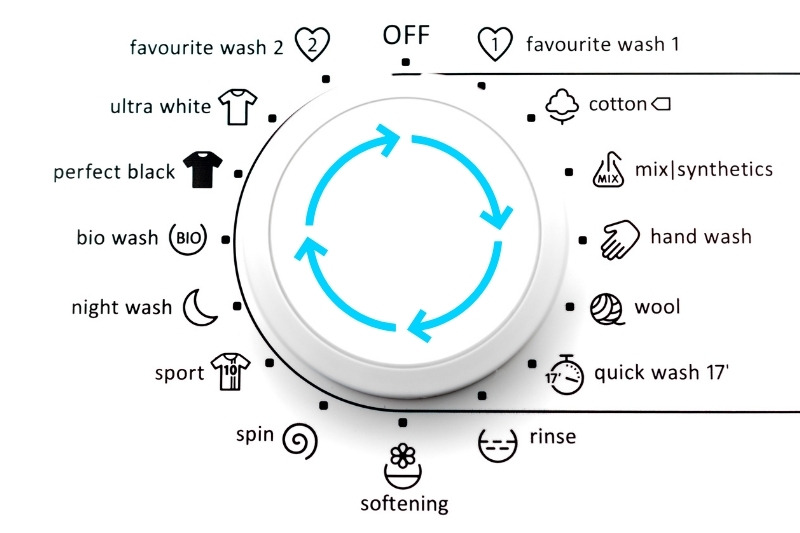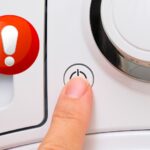Washing machines make doing laundry a somewhat less tiresome chore. But as with all electrical appliances, malfunctions can occur.
One of the most common complaints with washers is the machine getting stuck on a wash cycle. You’re left waiting for clean clothes, but they never come!
When faced with a washing machine that won’t finish the cycle, understanding the causes is essential for effective troubleshooting.
Here, we explore six common issues that can lead to an interrupted cycle.
From electronic malfunctions to mechanical failures, we explain the causes of the disruption and provide practical solutions to help you get your washer working again.
Why Is My Washing Machine Not Finishing Its Cycle?
Here are some common reasons your washing machine might not finish its cycle and solutions you can try at home today.
Issue 1: Your washer won’t drain

Drainage issues are the first possible reason your washing machine won’t finish the cycle.
When a washing machine can’t drain properly, water stays in the drum longer than needed. This can cause the following problems, each of which causes the appliance to stop mid-cycle:
- Water level control: Washing machines typically have a water level control system that monitors the water level during different cycle stages. If the machine cannot drain properly, the water level may not reach the required level for the cycle to advance.
- Time constraints: Washers are designed to complete each stage of the cycle within a timeframe. If the water doesn’t drain properly, it may take longer than expected to move to the next stage. Some washers are programmed to stop if they detect a stage is taking too long.
- Safety features: Many modern washing machines have in-built safety features to prevent damage to the appliance or flooding of your home. If the machine detects that it cannot drain water properly, it may stop the cycle prematurely to avoid potential issues.
- Cycle logic: Washing machines follow a specific logic in their cycles. If the machine is unable to drain water, it may interrupt the cycle as it’s designed to progress through each stage in a specific order. Failure to drain properly can disrupt this sequence.
To address the issue, you can try the following:
- Check for clogs in the drain hose or pump filter.
- Ensure that the drain hose is not kinked or blocked.
- Inspect the pump for any obstructions.
- Verify that the drain pump is functioning correctly.
Issue 2: Your washing machine is overheating
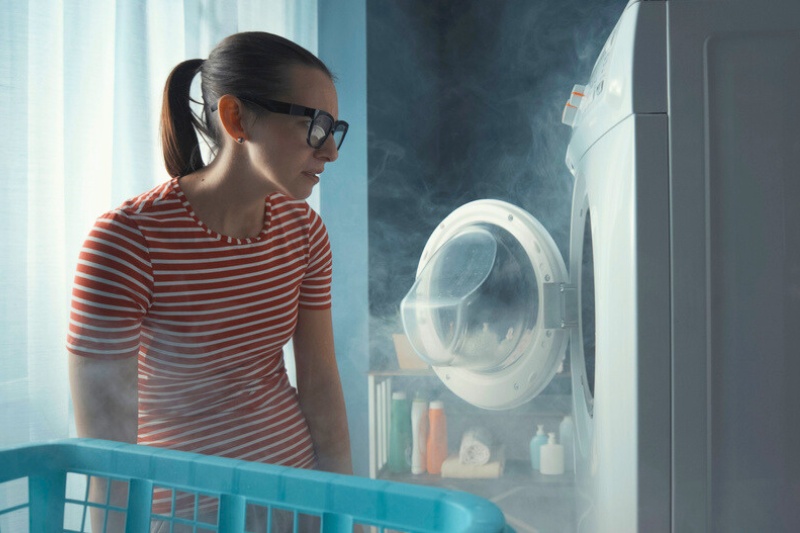
When washing machines are used too much, they may overheat. If that happens, it can lead to various issues that might prevent it from completing its washing cycle.
Here is a closer look at how it might impact the washing machine’s functionality:
- Safety mechanisms: Many washing machines have safety features to prevent damage or fire hazards. If the internal temperature rises too much, a shut-off feature may be triggered to prevent further overheating. This can result in the washing machine stopping.
- Electronic control board issues: Washing machines have electronic control boards that manage the different cycles. Overheating can cause damage to these components, leading to malfunctions that mean the machine cannot execute the programmed cycle properly.
- Motor problems: Overheating can also impact the washer’s motor. The motor is essential for various functions in the washing machine, including agitating and spinning. If the motor stops working due to overheating, the washing machine cannot spin, and the cycle cannot proceed.
- Thermal fuse tripping: Some washing machines have thermal fuses that break the electrical connection if the temperature exceeds a safe limit. If the thermal fuse trips due to overheating, it can interrupt the power supply, causing the washing machine to stop.
To address the issue, you can try the following:
- Ensure you’ve not overloaded the washer (the motor works harder and generates more heat).
- Examine the control board, motor, and thermal fuse for signs of damage or malfunction.
- Replace any malfunctioned or damaged components, if required.
- Check for proper ventilation around the machine, which can help prevent overheating.
Issue 3: Your washer thinks the door is open
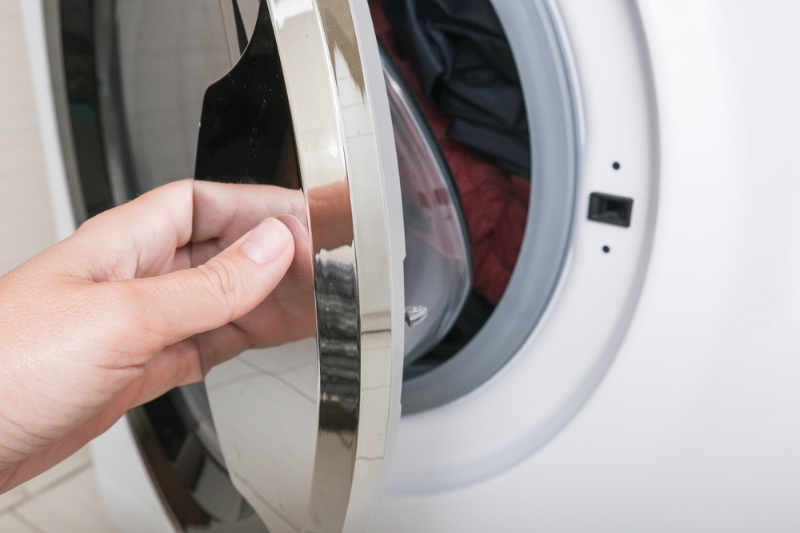
Most washers have a safety system that prevents the appliance from operating when the door is open.
There is a possibility that your washing machine mistakenly thinks the door is open when it’s actually closed. This can result in the machine not completing its cycle.
The reason your appliance thinks the door is open depends on whether you have a front loader or top-loading washing machine:
- Broken lock mechanism (front-loading washers): Front-loading washing machines typically have a door lock mechanism that engages when the cycle starts. If the machine fails to recognise that the door is securely closed and locked, it may assume it is open.
- Faulty lid switch (top-loading washers): Top-loading washing machines have switches that detect the position of the lid. If there’s a malfunction in these components, the machine might receive incorrect signals about the door, leading it to believe that the door is open.
To address the issue, you can try the following:
- Ensure that the door is closed correctly and that nothing is obstructing it.
- Examine the door lock mechanism for any signs of damage or malfunction. If the locking mechanism is faulty, it may need to be repaired or replaced.
- If the washing machine relies on switches, check for any damage or wiring issues. A faulty sensor or switch may need to be replaced.
Issue 4: Excessive sudsing
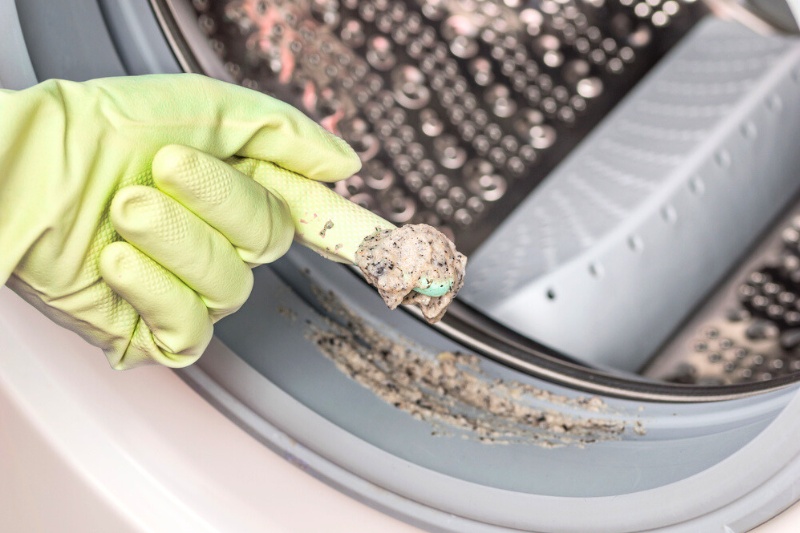
Something as simple as putting too much detergent in your washer could cause it to not finish its cycle.
This is due to excessive sudsing, which can interfere with water level sensors, the rinsing process, or cause overflowing:
- Sensor and pressure switch issues: Washing machines have sensors and pressure switches to monitor water levels. Excessive suds can cause these sensors to detect incorrect water levels, leading to confusion and causing the machine to stop the cycle.
- Poor rinse performance: Excessive suds can interfere with rinsing. If the detergent is not properly rinsed from the clothes, it can generate more suds during subsequent cycles. The machine may be programmed to detect this situation and pause the cycle.
- Preventing overflow: To prevent overflow, washing machines are designed to stop the cycle if there’s a risk of excessive sudsing causing water to overflow from the drum. This safety feature protects the machine and surrounding areas from potential water damage.
To address the issue, you can try the following:
- Ensure you use the correct amount of detergent for your load of laundry.
- If you have a high-efficiency washer, use special HE detergent that produces fewer suds.
- Examine the clothes for gunky residue, which can indicate you’re using too much detergent.
- Consider running a rinse-only to help remove excess suds from the clothes.
- Clean your washer to prevent detergent buildup on the sensors and other components.
Issue 5: Your washer’s timer is broken

The timer in a washing machine plays a crucial role in controlling the various stages of the washing cycle.
If the timer is broken, it can result in the washing machine not finishing its cycle. Here we explain how a broken timer can cause this issue:
- Cycle progression control: The timer is responsible for advancing the washing machine through different cycle stages (washing, rinsing, spinning, etc.). If the timer is broken, it may not properly signal the machine to move to the next stage, causing the cycle to stall.
- Signal to components: The timer sends signals to start and stop specific functions. For example, it tells the water inlet valve to open and the motor to start spinning. If the timer is faulty, these signals may not be transmitted correctly, and the cycle won’t finish.
- Duration control: The timer also controls the duration of each cycle stage. If the timer is broken, it may not accurately measure the time, leading to an incomplete cycle, a cycle that runs excessively long, or one that keeps adding time to the wash.
To address the issue, you can try the following:
- If your washing machine has a mechanical timer, manually advance it to the next cycle stage.
- If the timer is confirmed to be faulty, replace it with a new one.
Issue 6: The washing machine heater is faulty
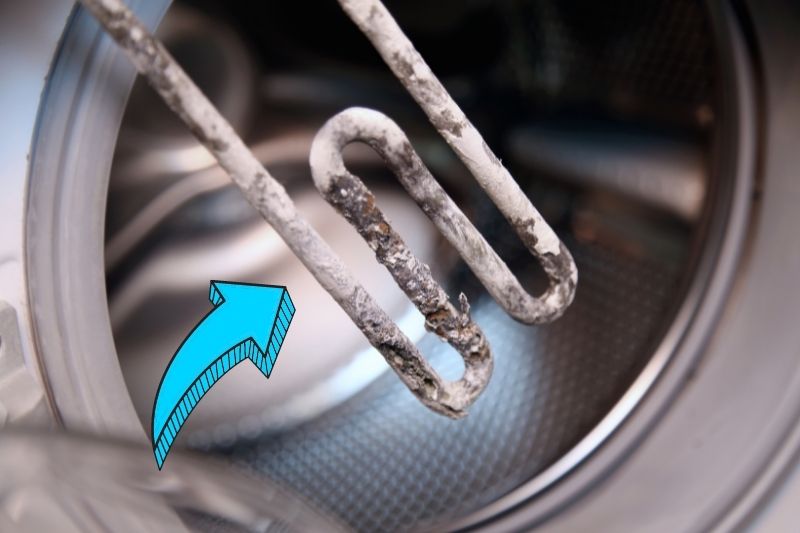
The heater in a washing machine is responsible for heating the water to the desired temperature during certain stages of the washing cycle.
If the heater is broken or malfunctioning, it can lead to various issues that may prevent the washing machine from completing its cycle. Here’s why:
- Temperature-dependent cycles: Many washers have cycles that depend on temperatures (e.g., hot water is often used for sanitising). If the heater cannot heat the water to the required temperature, the washing machine may pause or stop the cycle to address the issue.
- Error detection: Modern washing machines have sensors that monitor water temperature. If your appliance detects that the washing machine is not heating up, it may interrupt the cycle to ensure the wash is effective.
To address the issue, you can try the following:
- See if the washing machine finished its cycle when on a cold water wash.
- Visually inspect the heating element for any signs of damage or malfunction.
- Replace any broken or burned-out heating elements.
- If you’re not comfortable diagnosing or repairing the heater yourself, seek the assistance of a professional appliance repair service.
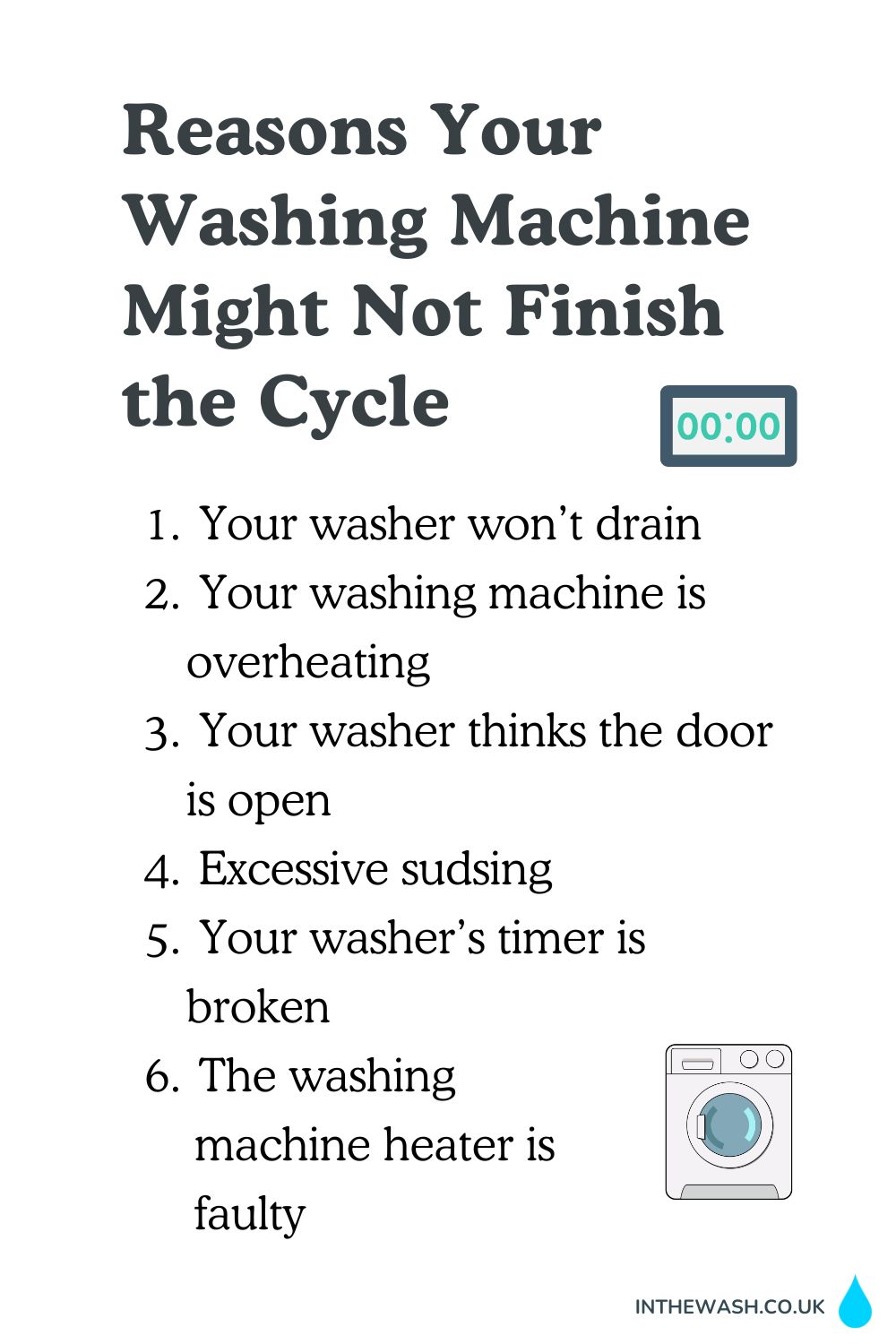

Hannah has a passion for cleaning. She worked her way around Australia by cleaning hostels in exchange for free accommodation and used her cleaning skills to bag a job as a chalet host for a luxury ski company in France.
